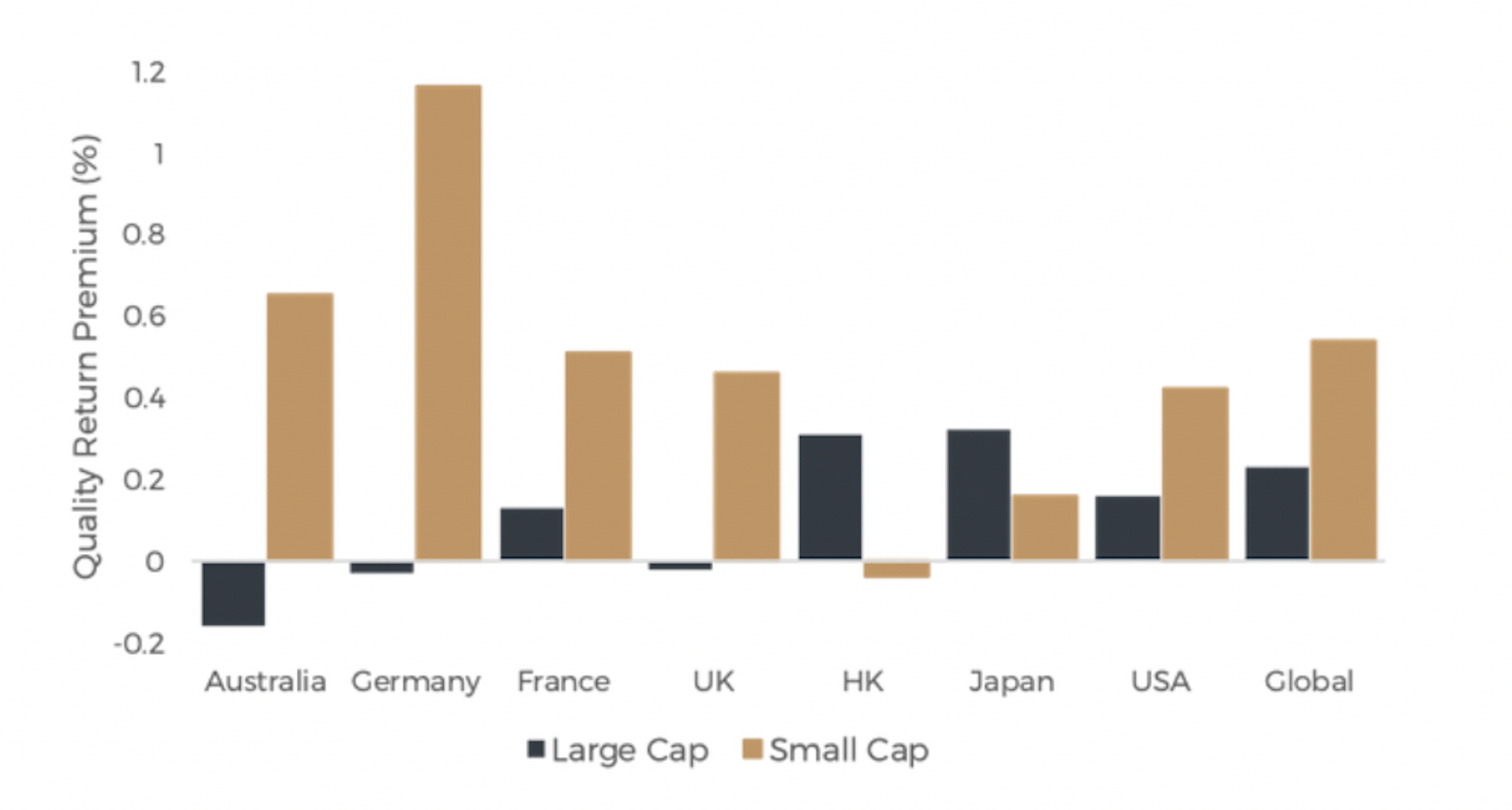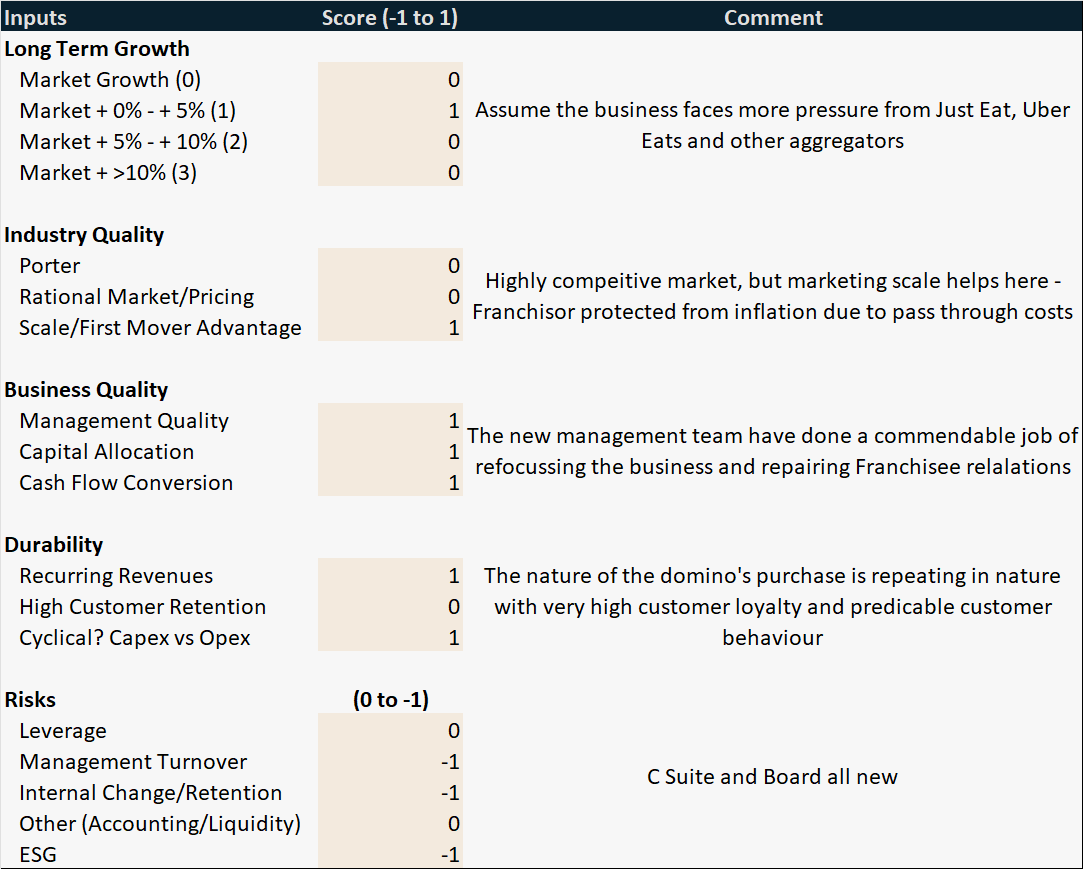How fundie favourite Fairlight finds quality stocks
Since the beginning of the pandemic, the rat race between Growth and Value has heated up, with both of these factors, at various points, winning over the market. While each month seems to bring about a new change of heart, right now, with inflation and rates on the rise, Value is once again at its zenith.
But is there a different way to invest? One led by a factor that isn't tied to market cycles? Glad you asked. Research shows that alpha has historically been generated by Quality companies, those with solid profits, stable earnings, strong management teams and little to no leverage.
And while it may be easy to identify a raft of quality names in the top end of the market, think Microsoft, Apple and Amazon - some of the best businesses in the world - surprisingly, the premise gets even more promising when you venture down into the small end of the market.
"There hasn't been a year over the past 20 years where both quality and small caps have underperformed the market over a 12 month period," Nicholas Cregan, the founder and senior portfolio manager at Fairlight Asset Management said.
In fact, in most markets, global small-cap investors have earned twice the returns from investing in quality than their large-cap counterparts.

By only investing in quality small and mid-caps, Fairlight has returned 14.3% per annum since its inception in November 2018. In comparison, its benchmark, the MSCI World Small & Mid Cap Index, has returned 11.1%.
In this wire, Fairlight founder and senior portfolio manager Nicholas Cregan* takes you through a brief history of Quality (as well as his outlook on the current market environment) and outlines a step-by-step process of how his team figures out what price they will happily pay for a quality business.
*Nicholas Cregan was named by Claremont Global's Bob Desmond and Prime Value's Richard Ivers as the fund manager they would invest their savings with as part of Livewire's 2022 Outlook Series.
Note: This interview was conducted on Monday 7th March 2022.
.jpg)
Why is now the time for adopting a quality lens?
The reason we are comfortable with taking a quality approach is that quality, as a factor, has had a very strong signal over a long period of time. We have a hundred years' worth of US data and it shows that quality outperforms junk over a hundred years by around 3% per annum. So that's a good starting point.
The other element which gives us a lot of confidence is that there hasn't been a year over the past 20 years where both quality and small caps have underperformed the market over a 12 month period. So it acts as a natural buffer when equity markets are selling off. Normally, quality businesses will do well during that period.
So we've had three periods of major market downturns since we started Fairlight. We had the Fed pivot in 2018. Fairlight nicely outperformed. We had the COVID period, where Fairlight again, nicely outperformed. And now we've got this, call it sector rotation or inflation rotation into value stocks. Now that's meant at the beginning of this year, the Fairlight strategy has underperformed. So we're not particularly worried about that at the moment, because we know why we're investing in the area that we are. The big question mark is, how long does that persist for, and do we have a crystal ball on whether we should be changing our spots?
I think there are a few things to be wary of here. The first thing is that a lot of what's driving the value rally at the moment is the oil and gas price – especially diesel, and its effect on inflation more broadly. Now we may be approaching a peak in oil and gas pricing, and we don't have a crystal ball on how long that will last. But what we do know is, it's inherently difficult to forecast. After all, oil prices we're actually negative as recently as 2020.
The second element is that within the small and mid-cap value index, three of the top 10 are oil and gas and four of the top 10 are either real estate players or banks. They are very much at the mercy of what's happening with the Federal Reserve and interest rate directions. So once again, very hard to forecast, and rounding out the top 10, are what we'd perceive to be structurally challenged retailers and industrial businesses. So these are companies that don't often make their cost to capital during difficult times. And so while it's very tempting to get sucked into low PE businesses and try and time the market. That's not what we are looking to do.
We've spent the last 12 months recycling our capital out of our highest PE names into businesses trading at around high teens to low twenties multiples. And that's our way of protecting ourselves from a valuation blow off that we've seen in the growth cohort.
The most damage that's been done to the small and mid-cap index, and we're very wary that there probably won't be a bounce-back there at all, is the most speculative parts of the market. So these are "software as a service" businesses that are often trading on 30 to 50 times sales and don't have any earnings. We think that part of the market's going to be impaired for some time.
What is one tool that you use before investing in a company?
What we essentially do is start with the market multiple for the business - so what's the market willing to pay for an average company? And then from there, we build up or subtract using a number of scores to do with quality, which is a summary of a deeper body of work we undertake through research and a company visitation program.
This is a discipline that would leave readers in really good stead. It doesn't have to be the same as ours, but if they came up with their own list of what they think is important, with past evidence to support their scoring, they leave themselves in a pretty good spot in terms of getting most of their outcomes right.

Question 1: How fast is the industry growing?
The first thing we start with is the market growth of the underlying industry that you are analysing? That gives you a starting point of how quickly an industry should grow. It's not necessarily to find the fastest growing industries, often they can actually attract more competition, but it's good to have an industry that is at least not sort of shrinking to zero or a structurally challenged industry.
Question 2: Can it push through pricing?
After the market growth piece, we go industry quality and we use Porter analysis to get some idea of whether the industry itself has rational pricing. And then within that, is the business able to push through pricing? Which is very important in the inflationary environment we see at the moment.
Question 3: Is it first (or second) to market?
Then we have a scale or first-mover advantage score, that we put in there. We typically only buy the number one or number two scaled competitor in the industry. It's very hard to push through pricing if they are number three or four, for instance.
Question 4: Does it have a strong leadership team and capital management practices?
Business quality is the decisions made by management, but it's also their capital allocation decisions. So are they buying back stock on our behalf when it makes sense or are they making decent acquisitions? And then within that, there's also cash flow conversion that comes under business quality. If you've got a high-quality business, they should be converting close to 100% of their cash every year.
Question 5: How reoccurring are revenues?
Durability is really important - which is the recurring nature of revenues. Is it subscription revenue or is it a contracted revenue? How occurring is it? Would it tend to go away during a crash of some sort? Which is really important. Customer retention rates are really important for us, it shows the health of the business. So we like businesses that got to that 98-99% customer retention rates.
Question 6: How cyclical are earnings?
And then how cyclical are the earnings? So at the moment, cyclicality is being rewarded, oil and gas, commodities, etc. But that's often not the case. In fact, it's more often not the case than it is the case. So whilst we take some pain in these short-term inflationary periods, over a full market cycle, staying away from cyclicality leads to fewer errors.
Question 7: What are the risks?
And then the last piece is the risks. So obviously, the big one is financial risk. How much leverage do you need to drive your returns? Signs of management turnover, or even employee turnover - we keep a close eye on that. And then accounting irregularities; the amount of adjustments that the management has to make to get to their non-gap earnings is important to us. And then we've got an ESG score as well, which feeds through from our models.
How does this score impact multiples?
That score feeds into the multiple that we're absolutely happy to pay for a business. So, if we start with a market multiple of EV/EBIT of 14 times, then essentially we're layering on an additional score, which gets us to an exit multiple on our models. Essentially, the higher the score, the more we're willing to pay for that business and vice versa. So we increase or decrease the multiple we pay on a scaled system dependent on the scores.
Outside of work, what are you passionate about?
I call myself a little bit of a generalist outside of work. So I like to do lots of different things badly. But my passion growing up was skiing. And I spent a lot of the seasons in between my university months, over Christmas, sort of working in US and European ski resorts. So that was my passion growing up. And so I'd love to get back overseas and spend some time on the slopes. What that's taught me about investing is probably absolutely nothing. It is really a chance to get away from investing if anything else.
The sport that's probably taught me a little bit more about investing, and probably the one that I'm the worst at, is climbing. I was able to spend some time down in El Chaltén in Patagonia for a few months climbing some of the more interesting mountains down there. The reason I went there was that I had a genuine and long-standing fear of heights. And there's definitely a parallel to investing there in terms of:
- Focus: You got to be completely focused on what you're doing and not be distracted by exogenous events.
- Risk-reward: So there's always an element of deciding what is the best thing to do under pressure, at any given moment, and being completely focused on that.
- Always being focused on the downside: But, in this case, trying not to look down. The thing that got a little bit interesting with those climbs is that you start to get so high, that the relativities of height become less of an issue. And you realise that, at that point, there's nothing you can do. And so you accept the fact that if you make an error, it's sort of lights out.
I think the parallel there is pretty tight. I wouldn't put myself out there as a great climber, but there were definitely some learnings from that experience that carried through to investing. It was a very cathartic process to go through and one which I'll treasure. But now that I'm a dad with a couple of kids, I've retired from that sport.
.jpg)
Never miss an update
Enjoy this wire? Hit the 'like' button to let us know. Stay up to date with my content by hitting the 'follow' button below and you'll be notified every time I post a wire.
Not already a Livewire member? Sign up today to get free access to investment ideas and strategies from Australia’s leading investors.
3 topics
1 contributor mentioned

